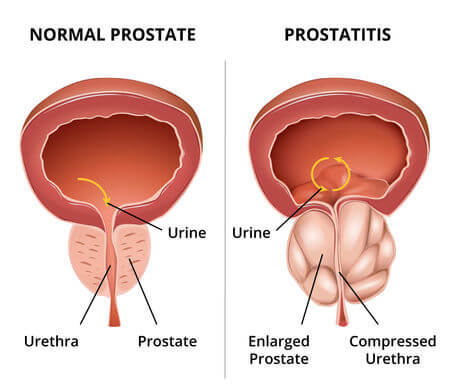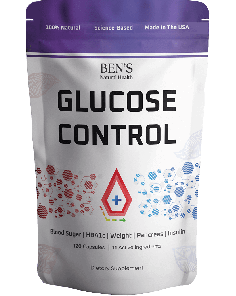- Q: What Is Zinc?
- Q: What Is Prostatitis?
- Q: Can Zinc Be Used to Treat Prostatitis?
- Q: How Does Zinc Relate to Benign Prostatic Hyperplasia (BPH)?
- Q: Are There Potential Side Effects of Zinc for Prostatitis?
- Q: What Are Natural Sources of Zinc?
- Q: What Are The Treatments for Prostatitis?
- Common Questions about Taking Zinc for Prostatitis
- Conclusion
- Our Medical Review Process
- Our Editorial Guidelines
- Medical Disclaimer
- Source
If you’re exploring ways to manage inflammation—particularly in the prostate—through more natural means, you’re not alone. Inflammation is the body’s immune response to harmful stimuli, such as bacteria, viruses, or toxic compounds. Research shows that even an injury, like a sprained ankle during a hockey game, leads to swelling, pain, warmth, and redness—classic hallmarks of inflammation.
We spoke with Dr. Letsa, who has reviewed an extensive range of anti-inflammatory supplements, including ginseng, maca root, turmeric, curcumin, black pepper, mint, and ginger. During the interview, Dr. Letsa discussed how these supplements can help modulate an overactive immune response and bring it back to a healthier baseline.
Beyond supplements, specific organs manifest inflammation with unique symptoms—like hepatitis in the liver, presenting right upper quadrant pain and jaundice, or arthritis in the joints, which can severely limit the range of motion. Millions of Americans use non-steroidal anti-inflammatory drugs (NSAIDs) such as Advil, Aleve, and Actron every day. More potent options, like corticosteroids (e.g., prednisone), can be even more effective, yet they come with significant side effects and high costs over the long term. These adverse effects may include fatigue, gastric ulcers, insulin resistance, allergies, elevated blood pressure, and kidney damage.
In this conversation, Dr. Letsa provides insights into why it’s essential to look beyond traditional pharmacotherapy and consider natural alternatives—particularly when it comes to prostatitis, or inflammation of the prostate gland.
Dr. Letsa has supplied extensive resources and research for this article, and a medical doctor has reviewed the content for accuracy and reliability. Below, we dive into the evidence surrounding taking zinc for prostatitis. Let’s explore, is zinc good for prostatitis?
Get Your FREE PSA Lowering Diet Plan!
- Naturally lower PSA levels
- Reduce nighttime trips to the bathroom
- Enjoy better bladder control and urine flow
Q: What Is Zinc?
Dr. Letsa answers: Zinc is an element represented by “Zn” in the periodic table. It’s typically brittle at room temperature and has been used medicinally since ancient times—Roman ships, dating back to 140 BC, have revealed large stores of zinc. The Romans even utilized it for treating sore eyes.
Through centuries of observation and research, scientists confirmed that zinc is essential for the survival of plants, animals, and humans. The first documented human zinc deficiency was reported in 1961 by a young Iranian farmer. Inadequate levels of zinc can lead to:
- Delayed puberty
- Erectile dysfunction
- Diarrhea
- Alopecia (hair loss)
- Underdeveloped testes
- A weakened immune system
Sufficient zinc intake, on the other hand, contributes to:
- Less severe diarrhea during gastroenteritis
- Slowing the progression of age-related macular degeneration (an eye disease)
- Lower risk of upper respiratory infections
- Enhanced and faster wound healing
Q: What Is Prostatitis?
Dr. Letsa answers: Prostatitis is simply the term for inflammation of the prostate gland. It’s more common than many people realize—nearly 10% of men experience some form of prostatitis in any given year, and about 6% find their symptoms especially bothersome.
Bacterial infections are a frequent cause, but there are four main types of prostatitis:
- Acute Bacterial Prostatitis
- Marked by severe symptoms and widespread infection
- Usually short-term
- Chronic Bacterial Prostatitis
- May present with or without notable symptoms
- Often associated with recurrent urinary tract infections
- Tends to be long-lasting
- Chronic Pelvic Pain Syndrome
- Characterized by pelvic pain
- Often involves urinary (voiding) issues
- Asymptomatic Inflammatory Prostatitis
- Involves inflammation of the prostate
- No obvious urinary or genital symptoms
Identifying which type of prostatitis you have is key to determining the best approach for relief and recovery.

Q: What Are the Signs and Symptoms of Prostatitis?
Dr. Letsa answers: The symptoms hinge on which category of prostatitis you’re dealing with:
- Acute Bacterial Prostatitis: According to research, here are the key symptoms:
- Fever, lethargy, and muscle aches
- Painful urination with a burning sensation
- Increased frequency or hesitancy in urinating
- Pelvic pain
- Significant tenderness during a digital rectal exam
- Chronic Bacterial Prostatitis and Chronic Pelvic Pain Syndrome: The study mentions the following symptoms:
- Pain in the penis or scrotum
- Discomfort in the abdomen or lower back
- Painful urination
- Possible urethral discharge
- Voiding difficulties
- Potential sexual dysfunction
Q: Can Zinc Be Used to Treat Prostatitis?
Dr. Letsa answers: Yes, multiple studies have highlighted zinc’s potential in managing prostatitis:
- Randomized Controlled Trial (Goodarzi et al., 2013):
- Involved 120 men with chronic bacterial prostatitis.
- One group took 220 mg of zinc daily for three months, another group took a placebo.
- The zinc group saw significantly reduced symptom scores compared to placebo.
- Human Study (Deng et al., 2004):
- Featured 61 men split into two groups: antibiotics plus organic zinc vs. antibiotics alone.
- The zinc group experienced markedly better relief from pelvic pain and urinary issues.
- Animal Research (Cho et al., 2002):
- Showed that zinc injections into rat prostates inhibited bacterial growth.
- Treated rats also had higher zinc levels in their prostate glands.
Collectively, these findings suggest zinc supplementation could complement other therapies for prostatitis, helping to reduce symptoms and possibly even bacterial load.
Q: How Does Zinc Relate to Benign Prostatic Hyperplasia (BPH)?
Dr. Letsa answers: A study in the Indian Journal of Urology examined patients with benign prostatic hyperplasia (BPH) and compared their zinc levels to those of individuals without prostate conditions. They found:
- Zinc levels in the prostate tissue of BPH patients were around 61% lower than in healthy prostate tissue.
- Those with BPH excreted about 20% more zinc in their urine compared to men without BPH or prostate cancer.
This indicates that zinc deficiency may be a feature of an enlarged prostate, and supplementing with zinc might help address this imbalance. While more research is needed, maintaining sufficient zinc levels could be important in managing or preventing BPH.
Q: Are There Potential Side Effects of Zinc for Prostatitis?
Dr. Letsa answers: Zinc is generally considered safe, but excessive quantities can lead to toxicity, though such cases are rare. Signs of zinc toxicity include:
- Nausea, vomiting, and epigastric abdominal pain
- Diarrhea and muscle cramps
- Lethargy
- Copper deficiency (leading to anemia, low white blood cell count, reduced immunity, and possible visual disturbances)
- Colour blindness
- Numbness and weakness
Men typically need around 11 mg/day of zinc, while women need 8 mg/day to maintain healthy levels. Always be mindful of any supplements you’re taking to avoid surpassing these guidelines unless otherwise directed by a healthcare professional.
Q: What Are Natural Sources of Zinc?
Dr. Letsa answers: Zinc can get into the body through inhalation (mostly an industrial issue), skin absorption (like wound-care products), and, most commonly, oral ingestion. According to the study, notable dietary sources of zinc include:
- Meats (beef, veal, lamb, pork, poultry, sausages, ham, bacon)
- Fish and Seafood
- Egg Products
- Seeds and Nuts
- Milk Products
- Soy Milk
- Cereals (pasta, breakfast cereals, breads)
- Fruits and Vegetables
Most individuals can maintain adequate zinc levels through a balanced diet featuring these foods.
Q: What Are The Treatments for Prostatitis?
Dr. Letsa answers: The study showed that acute bacterial prostatitis usually responds well to antibiotics. For the more prolonged forms—chronic bacterial prostatitis and chronic pelvic pain syndrome—patients may require:
- Neuromodulatory therapies
- Alpha-blockers
- Physiotherapy and pelvic floor muscle relaxation
- Cognitive behavioral therapy
It’s important to note that these interventions can come with side effects, and there is no guaranteed one-size-fits-all remedy.
Q: What Is the Medicinal Treatment for Prostatitis?
Dr. Letsa answers: In chronic cases, three main medication classes are commonly prescribed:
- Alpha-blockers: Silodosin, Terazosin
- 5-Alpha Reductase Inhibitors: Finasteride, Dutasteride
- Phosphodiesterase-5 Inhibitors: Sildenafil, Tadalafil
For acute bacterial prostatitis, antibiotics remain front-line therapy. Common options include (Pirola et al., 2019):
- Ceftriaxone
- Doxycycline
- Ciprofloxacin
- Piperacillin/Tazobactam
Q: How Do Diet & Lifestyle Impact Prostatitis?
Dr. Letsa answers: There’s growing evidence that diet and intestinal health can influence chronic bacterial prostatitis and chronic pelvic pain syndrome. The small intestine is responsible for absorbing zinc into the bloodstream, and a healthy gut microbiome can help reduce the risk of urinary tract infections.
A prostatitis diet high in fiber (fruits, vegetables, whole grains) and probiotics to support beneficial gut bacteria can be particularly helpful. Keeping your intestinal tract in good shape may lead to fewer inflammatory issues within the prostate and promote overall wellness.
Q: What Other Natural Treatments Are Available for Prostatitis?
Dr. Letsa answers: Besides zinc, the study states that several other natural compounds have shown promise for prostatitis relief:
- Ginseng
- Pot marigold
- Chinese tulip
- Saw palmetto
- Pollen Extract (Cernilton)
- Quercetin
- Ye Ju Hua Shuan
All these options may offer anti-inflammatory or antimicrobial properties, but it’s crucial to consult with a healthcare professional before adding new supplements to your regimen.
Common Questions about Taking Zinc for Prostatitis
Q: Could other minerals or vitamins enhance zinc’s effectiveness for prostatitis?
Dr. Letsa answers: Absolutely. Zinc works synergistically with other nutrients like selenium, vitamin D, and omega-3 fatty acids to support prostate health. Selenium and vitamin D are anti-inflammatory, while omega-3s help reduce oxidative stress. Combining these nutrients can amplify zinc’s benefits and provide comprehensive support for the prostate.
A research study highlighted a range of vital nutrients that may support prostate health. Among these important elements are vitamin C, known for its antioxidant properties; vitamin D, which plays a crucial role in various bodily functions; and zinc, an essential mineral for immune function. Additionally, beta carotene, a pigment found in many fruits and vegetables, as well as lutein and lycopene—two powerful antioxidants prevalent in colorful produce—are also included. Furthermore, flaxseed extract, rich in beneficial fatty acids, and omega-3 fatty acids, celebrated for its anti-inflammatory effects, is noted for its potential positive impact on prostate health.
Q: Are there alternative application methods (e.g., topical zinc formulations) that might benefit prostate health?
Dr. Letsa answers: While oral zinc supplements are the most common, emerging research suggests topical zinc formulations may offer localized benefits. These formulations could potentially target inflammation and improve zinc absorption directly in the prostate region.
Q: Is there any link between zinc levels and hormone balance in men with chronic prostatitis?
Dr. Letsa answers: Yes, zinc plays a crucial role in maintaining hormone balance. It supports testosterone production and regulates enzymes involved in hormone metabolism. Research iindicates that low zinc levels are often associated with hormonal imbalances and may exacerbate prostatitis symptoms.
Q: Which biomarkers, besides zinc, could be monitored to track improvements in prostatitis?
Dr. Letsa answers: Biomarkers such as prostate-specific antigen (PSA), inflammatory markers (e.g., C-reactive protein), and organic acid metabolites can provide insights into prostate health. Monitoring these biomarkers alongside zinc levels can help track the effectiveness of treatments and guide personalized care.
Conclusion
Inflammation remains a significant concern in many health conditions, including prostatitis. Traditional anti-inflammatory drugs like NSAIDs or corticosteroids can be effective but may bring undesirable side effects over time. That’s why exploring nature’s options, particularly supplements like zinc, becomes increasingly attractive.
Is zinc good for prostatitis? Well, zinc plays numerous critical roles, from supporting healthy immune function to promoting wound healing. Research indicates that zinc has antibacterial properties relevant to prostatitis, with studies demonstrating meaningful symptom reduction and evidence that zinc levels often decrease in men with prostate issues.
At Ben’s Natural Health, we provide a synergistic blend of zinc, essential vitamins, and other natural extracts specifically aimed at fostering comprehensive prostate health. Each Vegicap contains 15 mg of zinc—about 50% higher than the standard recommended daily allowance—helping ensure you meet your daily needs. By maintaining robust zinc levels, you might lower the risk of an enlarged prostate and experience fewer, less intense prostatitis flare-ups.
Our Medical Review Process
At Ben’s Natural Health, we are committed to maintaining the highest standards of accuracy, transparency, and scientific integrity. Every piece of content is meticulously crafted by medical professionals and undergoes a thorough review every 12 to 24 months. This stringent process ensures that our information remains accurate, up-to-date, and grounded in credible, evidence-based research. We rely exclusively on peer-reviewed studies from reputable medical journals, providing full citations and direct links to enhance trust and credibility. Learn more about our rigorous medical review process and research standards.
Our Editorial Guidelines
For over 25 years, Ben’s Natural Health has been a trusted source of scientifically accurate information on natural health. Our editorial guidelines are designed to uphold the quality, integrity, and reliability of every article we publish. Each piece is authored by qualified professionals—including doctors, dietitians, nutritionists, fitness experts, and surgeons—and undergoes independent quality checks. We prioritize transparency by clearly displaying the credentials and biographies of our contributors at the beginning of every article. Explore our editorial guidelines to understand how we create, verify, and fact-check our content.
Medical Disclaimer
The information provided on this blog is for educational purposes only and should not be considered a substitute for professional medical advice, diagnosis, or treatment. While our content is reviewed and written by licensed medical professionals, it may not address your specific health concerns. Always consult your primary care physician or a qualified healthcare provider before making any decisions regarding your health. Never ignore or delay seeking professional medical advice based on the information found here. Your use of this blog and its content is solely at your own discretion and risk.








